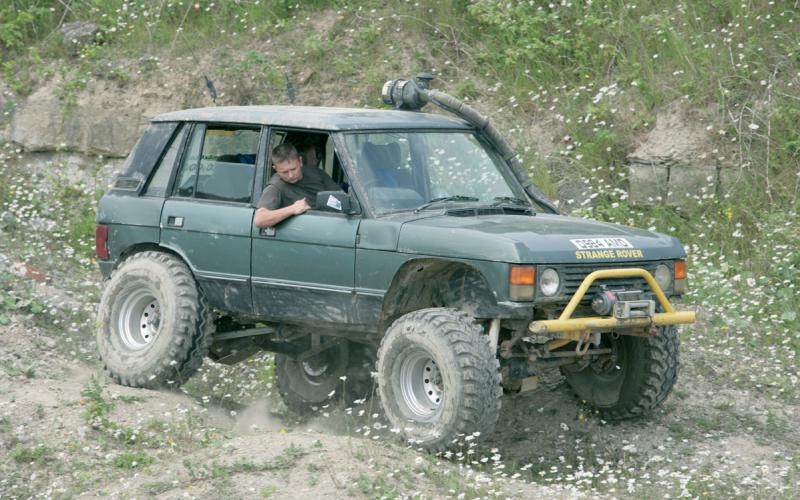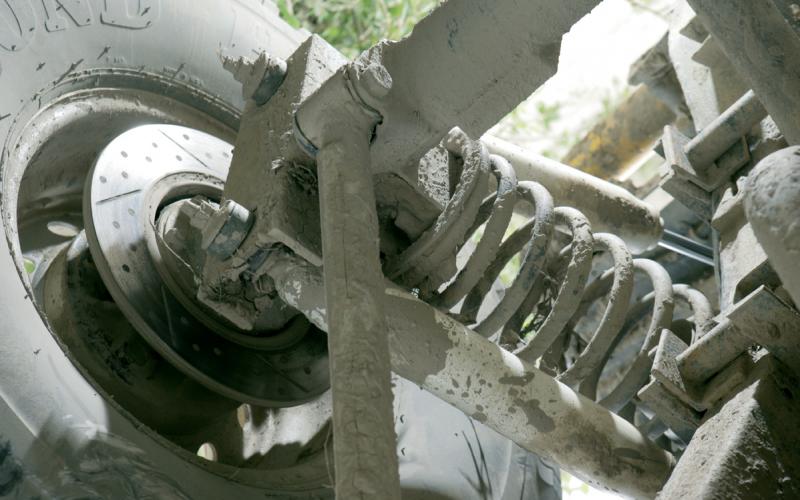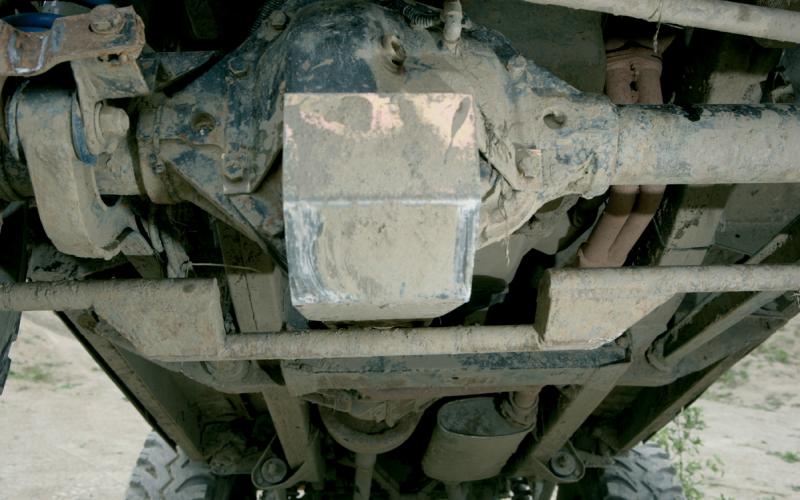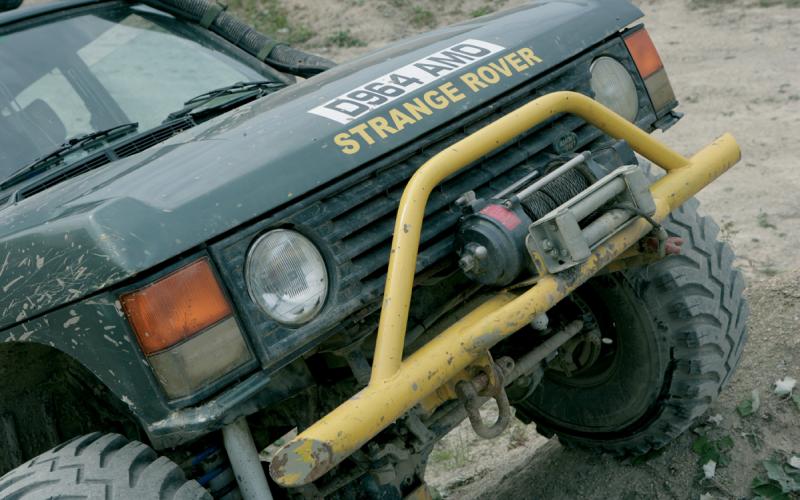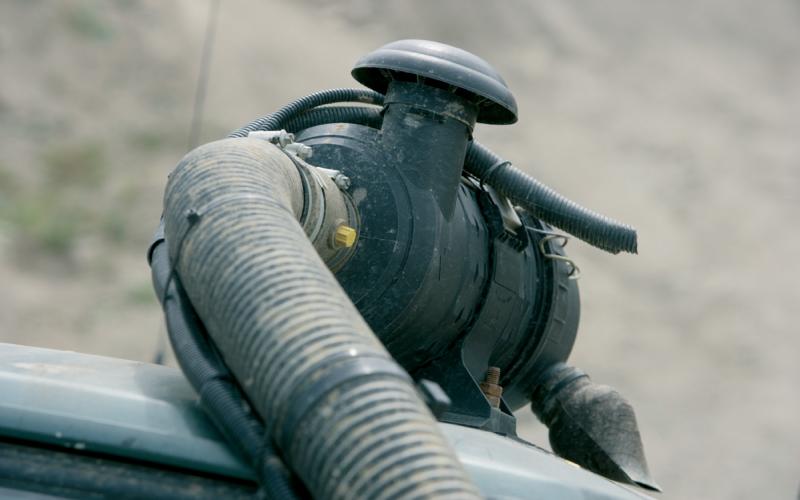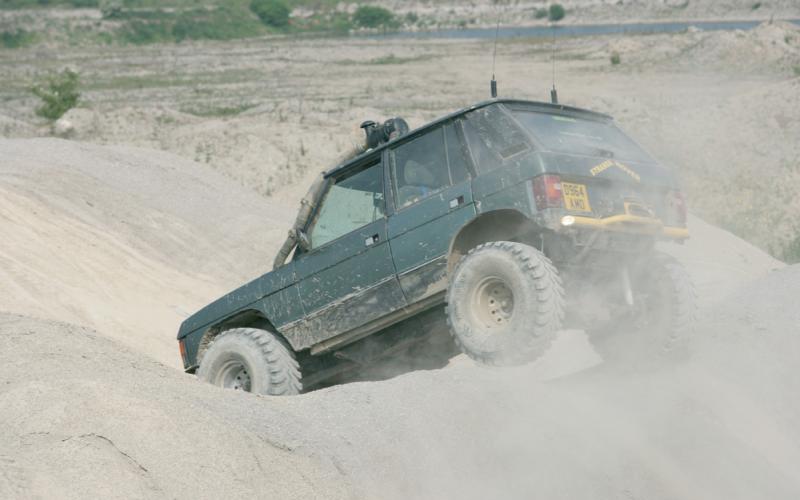Giant Green Jollies
When Tony Whitelock bought his Range Rover, it was just another bobtail. A few short months later, it’s gone a long way up in the world – and is set to be one of the first superstars of the British rock-crawling scene.
When you start out in off-roading, one of the first things you learn is that even though it was almost unbelievably posh for its time, the original Range Rover was equally unbelievable in its ability to conquer tough terrain. The combination of live axles, coil-springs, disc brakes and a lusty V8 engine made it a winner then, and it still is today.
The only problem was that with silly little 205R16 tyres, the Rangey’s ground clearance didn’t match up to the standards set by its suspension. Combine this with a hefty rear overhang, and you had the makings of an achilles heel which has seen many a failed hillclimb lead to a stuffed rear bumper or interestingly twisted exhaust.
The latter issue has come to be addressed by the many owners who’ve perfected the art of bobtailing, while the former is easily enough remedied by lifting the vehicle’s suspension enough to fit a set of slightly taller tyres. Depending on your view of whether wide or skinny is the way to go, favourites include 31x10.50R15 and 235/85R16.
There can’t be many Range Rovers in Britain, however, or indeed anywhere else, with tyres like Tony Whitelock’s. Dwarfing the sort of rubber you’d normally see even on a heavily modded Defender, his Denman Ground Hawgs measure a mighty 38.50x15R15 – utterly dominating every aspect of the vehicle’s appearance and character.
Yet the vast rubber was actually a virtue born of necessity. When Tony bought the vehicle early this year, it was on much more normal rubber – but, very unusually, fitted with a set of Salisbury axles front and rear. ‘The problem,’ he says, ‘was that being such a large diff, there’s not much ground clearance. Hence the only was I could get it was to put the big tyres on.’
Although the majority of the mods on the vehicle have been done by Tony over the last few months, it had already received a fair bit of chopping about before passing into his hands. Most notably, it had been bobtailed, meaning that vulnerable back end was no longer a problem – and making it the ideal base vehicle for the off-road toy Tony wanted to build.
The Range Rover is his third off-roader, after another of the same and a Defender, but it’s by far the most extreme. As with most modded vehicles, it’s a work in progress, but already the Salisburys are topped off by a four-inch suspension lift made up using Pro-Comp springs and the ever-popular ES9000 shocks, twinned at each corner and repositioned using fabricated mounts, with Polybushes used all-round. This works in combination with a two-inch body lift to help make space under the arches for the enormous tyres, though that alone isn’t enough – Tony has had to cut away a good deal of metal, and indeed that process is still ongoing. ‘I keep cutting a bit more bodywork away each time I take it out,’ he says, ‘because it keeps catching a bit more, a bit more, a bit more! It’s still catching a bit on the rear – I’ll have to just keep modifying it until I get it right.’
That could be an expensive approach to take in some areas, but in mechanical terms the work Tony has done has been much more of the tried-and-tested variety. With the extra suspension travel, for example, wide-angle yokes on the propshafts were an obvious and very necessary addition; the front prop is in fact a double-cardon unit, sourced from Scorpion Racing.
Elsewhere beneath the vehicle, cranked rear trailing links help free up as much suspension travel as possible to ensure the tyres stay in contact with the ground. And when they don’t, front and rear ARB Air-Lockers mean they won’t spin out uselessly.
The diffs themselves are standard-ratio units, though Tony is considering changing them to compensate for the taller tyres. The vehicle already has a lower-ratio transfer case, which sits behind a rebuilt gearbox and standard 3.5-litre V8 engine. ‘We don’t actually use high box at all,’ he says. ‘It’s always in low. It tops out at about 35mph.’
Protecting the diffs are a set of guards from Craddocks, which Tony says were something of a trial to source due to the rarity of the Salisbury front axle (his is from a Defender-based ambulance). Further underbody armour comes in the shape of the ever-popular Dan bars, while the front steering arm has had to be modified because of the size of the Salisbury’s diff.
Standard brakes wouldn’t take long to protest about the larger tyres, so it’s no surprise that Tony tasked a local company in Lincoln to replace them with upgraded units. The brake lines have been extended to accommodate the substantial body and suspension lifts, as has the steering drop arm, though the fuel filler wasn’t a problem as the tank has been replaced by an internal unit.
The steering itself doesn’t think much of the bigger tyres either, thanks to the extra effort it takes to turn them. ‘When you’re on a tight section, you really struggle with the steering, because of the sheer size of the tyres. The front winch hydraulics are mounted where the air-con pump would be, so I’m thinking of getting rid of the PAS pump and replacing it with two-way ram system, like you have on dumpers.’ Said front winch is a hydraulic Milemarker unit, as used by the American military. ‘You can pull a Hummer up a vertical incline with it,’ says Tony. ‘It’s very slow, but it’ll pull anything.’ The winch sits on a modded front bumper, which bolts straight to the chassis. It’s backed up by another Milemarker at the back, though this one is electric rather than hydraulic. Both winches run steel cable and work off twin batteries wired in parallel – so far at least, Tony hasn’t bothered with a split-charge system, though this may have at least something to do with the fact that he’s never actually been stuck.
Further mods include a snorkel that’s the 4x4 equivalent of one of those ludicrous tea-tray spoilers you used to see on the back of things like Sierra Cosworths and, to the long-term detriment of every red-blooded 1980s’ student’s right wrist, the Lamborghini Countach. Tony reveals with an element of relief that it was already in place when he bought the vehicle: ‘I’ve never taken it off, just because it’s something different. There are about five filters inside it, so nothing will ever get through to the air intake! I don’t know where he got it from.’ Before you ask, the sinister looking affair on top is merely on induction fan, rather than something electric with the capacity to pluck hapless seagulls from the air and turn them into salami. ‘I dare say it would be better on fuel if I altered the breathing system,’ Tony admits. ‘But it does a very good job.’
Breathers for the axles and gearbox are run up to the top of the snorkel, so the Rangey is equipped to keep moving through water at least for as long as the V8’s electrics hold out. That’s assuming the interior doesn’t start filling up, of course, though you can’t imagine Tony being too bothered if it does.
While he does have plans for the vehicle’s appearance (these include an entire repanelling job using a P38 body, which he reckons ‘might cause a few stares’), at present Tony is concentrating on getting it working properly off-road. So although the original Range Rover seats are retained, it’s not exactly pretty in there. Though in its own way even this most radical of Rangeys is still a family-friendly 4x4: ‘We started off with no seats in the back. I changed it because our little girl wants to come with us, basically – she absolutely loves it. One of the reasons we got rid of the Defender was that it was too agricultural for her, really. She got shaken to pieces. So we’ve mounted a central rear seat so she can see through, and there’s obviously a harness.’
Elsewhere on the inside, niceties are at a premium. There is a CB, however – though just the one, despite what the lairy twin aerials on the roof might have you suspect. (‘That’s only for show… I just thought it would set it off, really!’)
This desire to cut a dash suggests that the Range Rover might not look quite as rough and ready forever, either inside or out. That, after all, can only be what prompted Tony to think about putting a P38 body on it – and although no-one would argue about the wisdom of replacing the bog-standard V8 with a diesel, no-one who ever thought their Land Rover could do with a GM V8 unit from a Hummer arrived at that conclusion without their judgement being impaired by at least one of the deadly sins.
Having said that, a vast diesel is at least a bit relevant to this particular Range Rover as Tony plans to be part of the rock-crawling scene in the UK from the moment it starts taking off.
‘We started off not intending to do that, but we’ve done a few now and it’s quite good fun. Rather than just hairing about everywhere, I prefer going slow and just tackling things, basically.’
Although he claims not to have fitted the huge tyres for any other reason than to lift the Salisburys’ diffs further from the ground, they certainly make the vehicle ideal for this kind of off-roading – and with the ARBs there to back up its impressively flexible suspension, it’s not that surprising that Tony has never been stuck. Watching it in action, you’re struck by the fluidity with which its wheels follow the terrain – there’s none of the lurching you get from some off-roaders, even those with long-travel set-ups, and the body stays stable in all but the most extreme situations.
Tony admits that it doesn’t always feel that way in the cabin, though, and that at anything more than crawling speeds it can start getting bouncy in the cabin. ‘You can certainly feel the stones,’ is how he puts it. That could be down to the 8psi at which he runs the tyres – a pretty low figure by most 4x4s’ standards, but possibly too high when you combine the relatively light weight of a bobtailed Range Rover with the epic amount of air a set of 38.50x15R15s holds, even at low pressures.
As time goes on, it’s likely that Tony will start experimenting with the sort of really low pressures American rock-crawlers commonly use – especially if he does indeed get involved with that scene as it grows in the UK. That’s completely in keeping with the way he’s moving the project forward: ‘Every time we go out, when we come across a problem we try to rectify it. Simple as that.’
You don’t have to look far in the Land Rover scene to find someone who’ll disapprove of the sort of approach Tony has taken to modifying his Rangey. But it’s a vehicle that really does work off-road – and if he does indeed get it looking as good as it performs, it’s going to be a star.
And that’s as it should be – because not many people display the same combination of enthusiasm and a willingness to be different as Tony. ‘It really seems to be taking off, off-roading in general,’ he says, ‘just in the time since we started doing it. The way we look at it is that you’re not going to get done for speeding, no-one’s going to get hurt, you can bring the kids and for what it costs, everyone’s going to have an excellent day out.’
Put like that, it’s a wonder more people aren’t doing it. If they all built their vehicles with as much imagination as Tony Whitelock, what a marvellous place the off-road scene would be…
RANGE ROVER, ARB AIR-LOCKERS, BOBTAIL, DIY SNORKEL, DENMAN GROUND HAWGS, SALISBURY AXLES, SCORPION PROPSHAFTS, DAN BARS, PRO-COMP SUSPENSION, MILEMARKER WINCH




